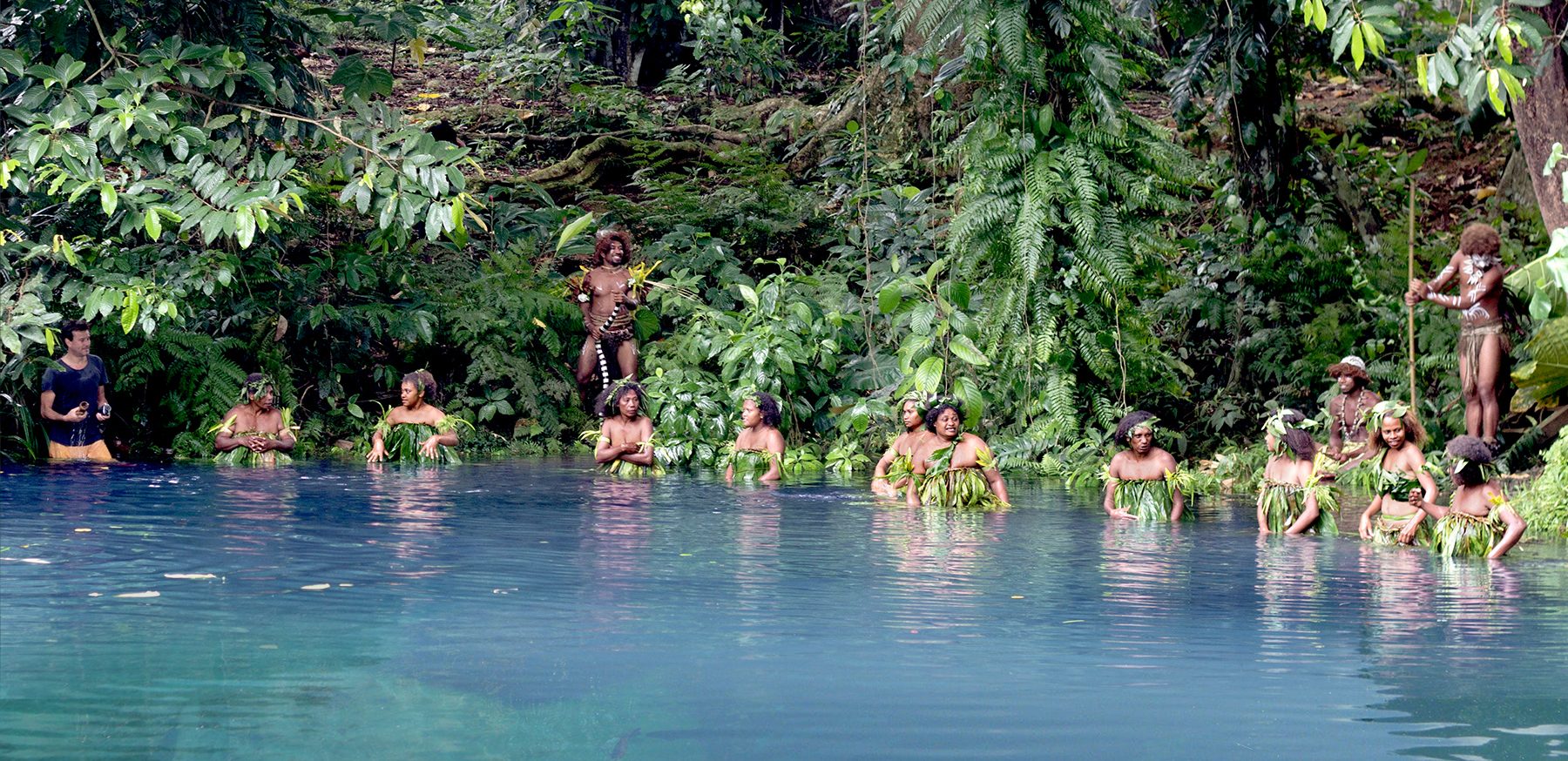
Small Island, Big Song, Huge Story
In February 2016, armed with a Zoom H6, a handful of microphones and a dose of pragmatism, Tim Cole and BaoBao Chen set off on a recording adventure that would take them around two-thirds of the world’s circumference, from Madagascar to Easter Island. Since then they’ve released a multi award-winning album, uploaded a series of music videos, and made a movie that’s screening at festivals around the world.
While recording traditional music in Vanuatu, producer/engineer Tim Cole learnt of a heritage shared by island communities throughout Asia, the Pacific Ocean and the Indian Ocean. Most of those communities were established by ancient seafarers; the indigenous people of Taiwan who, thousands of years ago, pushed their boats out to sea and headed for the horizon, not knowing what they’d find or where they’d end up. Known by historians and anthropologists as the ‘Austronesian expansion’, their descendants became the Polynesians, Micronesians, Melanesians and Torres Strait Islanders of the Pacific, the Indonesians, Malays, Filipinos and Chams of Asia, and the Malagasy people of Madagascar. Inspired by this, Tim thought “What an incredible wealth of cultures, music and instruments to base an album on.”
A year later he was in Australia’s remote Central Desert recording Inmas (songlines) of the Pintupi Elders – the last Aboriginal Australians to leave their traditional nomadic lifestyle. Their ancient songs were full of practical information about how to live on the land, how to maintain social systems in harmony with nature, and more. That night, while listening to the BBC World Service detailing the IPCC report on climate change, a tragic irony struck him: the very people who know how to live sustainably on the land will be the first to lose their land through the unsustainable practices of the rest of the world. The developed world is going to lose the knowledge it needs to hear, at the time when it needs to hear it the most.
This was all the motivation Tim needed to act on his previous inspiration. Teaming up with his partner BaoBao Chen, they headed to the shores of Taiwan to retrace the path of the ancient seafarers. Armed with a small collection of microphones and cameras, they visited 16 island nations and collaborated with over 100 inspirational artists to create a series of contemporary ‘Oceanic Songlines’ for a sustainable future. The resulting album won the ‘Best Asia & Pacific Album’ award at Songlines Music Awards (UK), the prestigious ‘German Record Critic’s Award’ (Preis der Deutschen Schallplattenkritik), and was nominated for ‘Best Concept Album’ at the American Independent Music Awards. They’re currently taking the movie of their musical adventure around the world festival circuit. In the following interview, Tim relates their story of tropical islands, typhoons, bush mechanics and audio derring-do…
EQUIPMENT
Greg Simmons: Thanks for stopping by to chat, Tim. As you know, AudioTechnology is a magazine for sound engineers and recording musicians, so we’d better start with the recording equipment you used for this project…
Tim Cole: Sure. I started with a few mics I’d collected over the years. I had a Neumann TLM102 I’d bought for an earlier indigenous project, and I had a Shure SM87 live condenser mic that I’d used for Archie Roach and others. With those two mics I knew I could pull a good vocal sound. I also had a little AKG 408 condenser mic that was handy because I could clip it on to things and hide it. I didn’t have a stereo pair, and I didn’t have a field recorder. I’d been working at CAAMA [Central Australia Aboriginal Media Association] before starting this project, and as a farewell gift they gave me a Zoom H6; it provided me with an XY pair of cardioids, and it also became my field recorder.
GS: So you made this entire multi-tracked album using a Zoom H6 as your recorder?
TC: Yes. All the recordings were made through the Zoom H6; sometimes on its own with a guide track, other times as a USB interface recording directly into Protools on my Macbook Pro. So in terms of mic preamps and converters, everything passed through the H6.
GS: That’s amazing…
TC: You should see that machine now! It went through a lot during this project. It’s covered in scratches and marks, it was dropped a few times and the XY microphone got broken, one channel died, but, overall, it kept working so I kept using it. It’s actually going into a museum exhibition about this project…
GS: Cool! Any other gear?
TC: We planned to film as well, so I bought a lapel mic that could connect directly to the camera; it’s called a ‘MyMic’, it has a little gooseneck and was incredibly handy. It turned out to be the main vocal mic for many of the performances – but only after a lot of EQ! Then I also got a Zoom H1; I wanted to record surround sound at the same time, so I’d often put the H1 off in the distance to capture the left and right rear channels.
About halfway through the project we got a sponsorship from Røde, who were really happy to help us. They gave us a matched pair of NT5s and the Stereo Bar, an NTG2 shotgun mic, and a Stereo Video Mic to put on the camera for ambience. And, of course, their windjammers for everything!
GS: What about monitoring?
TC: I wanted to do all the post-production in the field, as we went from island to island, and I knew the biggest problem I was going to have from an audio point of view was sitting the bottom end accurately. I looked at a lot of BlueTooth speakers; ones that were sort of accurate, not too coloured but had a bit of punch in the bottom end. We ended up with the iLoud monitor from IK Multimedia.
GS: Their first model?
TC: Yes, the stereo system in one box. It’s portable and it’s battery powered, which is really important in the field when you don’t have electricity. It’s also loud enough to use as a playback monitor, and that was handy because sometimes we filmed the artists again after recording them, miming to playback. It can create really high SPLs without blowing the speakers – we’ve even used it for the artists to rehearse to while on the deck of a boat!
GS: I love the idea of carrying monitor speakers for mixing on location, but most of the ones I’ve heard that are small enough to be considered ‘portable’ don’t perform well in the deep bass. How was the iLoud in that respect?
TC: I knew that some of the instruments I’d be mixing contained very deep bass, but I couldn’t hear accurately below about 80Hz on the iLoud. It was there, but I felt like I shouldn’t rely on it. So I made a playlist of mixes I’d previously done that I knew contained frequencies right down to 50Hz or even lower, and I took that into a headphone salon in Taiwan. I settled on a pair of Sennheiser HD8 DJ headphones that had good isolation and reproduced the lows in my mixes truthfully. Between the iLoud and the HD8s I knew I could sit the bottom end close enough for the mixes and videos I was going to make in the field, and do the fine-tuning later in mastering.
So we hung the mics from trees, or found sticks to tape them to.
![[[08]]-pichi](jpg/08-pichi-4.jpg)
BREAKING THE RULES
GS: Speaking of instruments that create very deep bass… This was an ambitious project that aimed to combine instruments that evolved in different parts of the world and with different musical aesthetics and tunings. Despite that, you’ve managed to blend them all together and create a consistent feel throughout the album. How did you achieve that?
TC: When producing albums, I think it’s really great to set rules that define the approach you’re taking. Those rules help to provide consistency and they also help to define the album’s concept. I love concept albums, you know? Albums that are works of art, with a theme that bonds all the different parts together. The Small Island Big Song album is a concept album, of course, so I created some rules to hopefully tie all the different parts together while giving it the most substance and the most integrity, trying to keep it very honest and genuine.
GS: Are you referring to the producing/engineering rules described on the Small Island Big Song website?
TC: Yes. They were the rules for producing and engineering: only traditional instruments and languages could be recorded, all recordings had to be captured acoustically with no pickups or DIs, all recordings had to be driven by feel with no metronome or locking to a grid, and all takes had to be filmed. Also, all the artists involved had to be first nations people who were connected together through the seafaring heritage that is behind the whole project, and who are keeping their traditional language and instruments alive through their musical practice.
GS: That last part is very important. It means the music they contributed didn’t have to be traditional, as long as it satisfied the other rules. That would allow the artists to create new music and collaborations using their traditional languages and instruments, thereby keeping them alive and in the mainstream.
TC: Yes, because music is always evolving. What we consider old and traditional now was once considered new and contemporary…
GS: I read on your website that you let the artists choose the location to record at. That goes against the grain of all location recording and filming. What if the chosen place was too difficult to get a good sound, or had lighting or other visual problems?
TC: That was always a possibility but the goal of the project was to create something potent, something rich in the sonic and visual textures of those locations and the cultures that have the longest living relationships with them. I know this sounds a bit esoteric, but maybe there’s some sort of ineffable voice or texture from these places that comes through in the sounds and images we’ve captured. So we let the artists guide the process; where we would record, what music they would perform and what instruments they would use – as long as they stayed within the rules. Then it would be up to us to make it work.
GS: Did you ever have to break the rules?
TC: Sometimes… There’s a song called Gasikara that we recorded with Airileke. He’s a traditional drummer who has studied throughout Papua New Guinea and the Pacific, but he’s also a Hip-Hop producer. He said, “I’m gonna give you beats”, which was against our rules, but he recorded himself playing traditional patterns from the village of Gabagaba – which means ‘Drum Drum’ in Motu, which is his language. His beats contain the garamut slit drums, the paté log drums, and the kundu and warup skin drums; they’re all traditional drums from that region and they were all played and sampled by him. We broke the rules there because, you know, these cultures haven’t somehow been frozen in time since Western colonisation; they’re alive now with a vision of their future, and they’re still pursuing new ideas and adapting new technologies – including sampling, loops and beats. That’s why Airileke said he was going to give us beats: he was essentially making a statement about that…
GS: That is very cool, and justifies breaking the rules. Any other examples?
TC: I wanted all the songs to be driven by feel, not a click track or locked to a grid, because songs have their own life; they’re played by musicians with feel and heart, and often they’ll speed up or pull back at some points, and there’s a sort of breathing about that. Being off-grid opened up a whole lot of new problems for me because there were so many different artists overdubbing at different times; I had to do a lot of editing, and that meant creating tempo maps and so on, but it was worth it. There were two songs that broke the off-grid rule.
Ben Hakalitz contributed the song that became Alie Sike. He was working with a special 6/8 rhythm; it’s special because the people of his island, Bougainville Island in Papua New Guinea, are soon going to vote on becoming an independent country, and, as a Bougainville musician, he was working on a song to strengthen their cultural identity. He described this unique 6/8 feel as “the rhythm of our people”, and gave it to me as a file recorded to a grid.
The other was the opening song, Senasenai A Mapuljat from Siao-Chun Tai of the Paiwan indigenous people of Taiwan. We were hoping to get a strong melodic song from Taiwan because beautiful strong melodies and harmonies are a feature of the indigenous musical heritage of Taiwan, and that is where this whole project began. We approached Siao-Chun after seeing her in concert, and her record company gave us stems from her album that had been recorded on grid.
GS: Did you ever have to break the traditional instrument rule?
TC: No, but we had to work around it! There were two songs that had acoustic guitars to begin with. One of those was Alie Sike from Ben Hakalitz, which I mentioned a moment ago. The other was Naka Wara Wara To’o from Charles Maimarosia of the A’re A’re people of the Solomon Islands. Charles began his guide track with acoustic guitar and singing over it, so when we went in to the forest to record his overdubs – vocals and ‘au rerepi’ (pan pipes) – he was listening to the acoustic guitar in the guide track. After that, everyone else who added to his song was playing to the acoustic guitar guide track.
GS: Many years ago I spoke with Denis Crowdy about recording string bands in Papua New Guinea, which are heavily based on acoustic guitars [‘Songs of the Volcano’, AT issue 47]. Do you consider the acoustic guitar to be a traditional instrument of those cultures?
TC: It’s not ‘traditional’ by our definition, so we had to find a way to replace it on those tracks. I love acoustic guitars; they’re rhythmic, you can play chords on them, they can provide the music for a whole song on their own. When I took the guitars out of those songs they lost their guiding body, so I needed something to replace it.
GS: What did you do?
TC: There’s this incredible musical tradition from Melanesia called the ‘monoka’. It’s a bamboo orchestra that has up to 10 musicians playing tuned bamboo pipes; some are blown like flutes, some are hit with thongs…
GS: ‘Thongs’ as in ‘flip flops’?
TC: Yeah! I don’t know what they used in the past, maybe the palms of their hands? I suppose it’s another example of a culture adapting a new technology to their traditional ways.
After a bit of tuning to put them into the key of the songs we were working on, we were able to replace the acoustic guitar parts with four musicians playing the monoka, and it was amazing.
GS: Ah! I’ve seen that in the video for Naka Wara Wara To’o. It’s easy to imagine the monoka part originating on acoustic guitar, but it’s far more authentic with the monoka. How did you record it?
TC: There were three key bamboo instruments, and I just had the Neumann TLM102, the Shure SM87 and the little AKG 408. After listening for the best mic placements I ended up with one mic behind each of those three instruments. Then I put the Zoom H6 with its XY pair in front. I also had to provide headphones to all the musicians because they had to hear the guide tracks.
![[[12]]-pichi](jpg/12-pichi-4.jpg)
The only tools I let myself use for mixing were EQ and compression.
GS: I’m guessing you needed a lot of headphones!
TC: Yeah! We were doing this on a very low budget, so for the performers we used whatever headphones we could get. Sometimes it was my Sennheiser HD8s, sometimes it was cheaper headphones we picked up on our way to the location, and sometimes it was the free headphones that come with devices when you buy them. Lots of extension leads connected to headphone splitter adaptors stacked on top of each other, coming out of the H6 running as loud as it could without distorting! I was running a guide track from the line out of my iPad into another channel of the H6 to feed to the headphones, and that signal was also being recorded onto one of the H6’s tracks for sync in post-production.
GS: Did you use the monoka on any other songs?
TC: We needed bass lines for some songs. For Gasikara, the Hip-Hop song, Ben Hakalitz played a thumping bass line using the bamboo; it’s really deep, a very unique bass sound. We also used the monoka for Ka Va’ai Mai Koe, a song by Yoyo Tuki from Rapa Nui. It was a reggae type of song, so we obviously needed a deep bass sound; two of the monoka musicians from the Yumi Yet Bamboo Band wrote a bass line and played it by blowing into the bamboo tubes. You can see it in the video, two musicians facing each other and blowing into large bamboo tubes.
GS: The video for Naka Wara Wara To’o includes a segment with women standing in a river making music by splashing the water. They’ve also got their own full video, Sogor. I’ve recorded a lot of indigenous music in different locations, and I’m constantly fascinated by this recording. It has a driving rhythmic pulse that seems to come from the water itself, and there are vocals but I cannot see any microphones in the video. How did you record that?
TC: That was the Leweton Cultural Group from Vanuatu; it’s taken from an earlier project that helped to inspire Small Island Big Song – it’s called the Vanuatu Women’s Water Music. I was using different equipment then. I had a couple of Mann M1 microphones sitting in the bushes, and they were the key microphones picking up the water splashing.
GS: How did you capture their voices?
TC: Their voices weren’t loud enough in the recording from the river, so back at the village I played it through my monitors and asked them to sing along with it, close miked. That allowed me to add another layer of them singing, but cleaner and closer.
GS: That certainly worked! What about that driving rhythmic pulse?
TC: I did some pre-recording as well. They often performed this same piece of music for tourists, but in a concrete swimming pool rather than the river. To record it – believe it or not – I dropped a Tandy PZM microphone straight in to the water.
GS: Deliberately?
TC: Yeah, I just dropped it straight in! I’d done that before in a swimming pool and in a bath, because I didn’t have a hydrophone. That Tandy PZM worked underwater with no protection, just like that – although it doesn’t work any more after that recording! [laughs] I also used a Shure SM57 in a condom, all taped up and water sealed. From those mics I got that underwater sound; it’s a kind of explosive ‘boom’ that happens when the women slap a handful of air into the water. I post-synced that sound to the movement in the video to recreate the low frequency rhythm you can hear in the video.
GS: Like adding a sample? Wouldn’t that be breaking the rules?
TC: I don’t think of it as a sample in the sense that it’s not from a sample library; it’s actually the sound those performers create during the performance, but it doesn’t come through enough in the original recording so I’ve added it back in again.
GS: So it’s like double-tracking a vocal or acoustic guitar to make it stronger in the mix, as is typically done in Western music production…
TC: It’s somewhere between a double-track and an edit, I suppose! [laughs] But seriously, I’m really into integrity in that respect. Whenever I was doing what might be considered a ‘sampling moment’, it was done that way. For example, the warup drum from Torres Strait Islands has got this beautiful rich bottom end, but sometimes it’s not strong enough in the performance recording. So in the video you’ll see the musician playing the warup, but I might’ve dropped in an additional recording of that same musician playing that same drum to provide that rich bottom end while remaining authentic.
In all of the Small Island Big Song music there’s no other sounds used anywhere except for the sounds from the instruments that were actually recorded or the spaces they were recorded in. Everything was created in the field, from being with these people, on their land. The same with the visuals; every image was captured by us, there’s no stock library footage.
![[[15]]-pichi](jpg/15-pichi-4.jpg)
GS: Hiding mics in bushes and dropping mics into water… We’re heading into some interesting recording territory here! Many of the videos show the microphone taped to a stick or a length of bamboo, or hanging from a tree. Was that just to look good for the video?
TC: No, not at all. That was actually a practical consideration. We could only bring what we could carry on the plane without incurring excess weight charges. Everything was weighed and budgeted because we were recording audio and capturing video at the same time, and there’s just two of us. That meant no microphone stands, because they were too heavy. So we hung the mics from trees, or found sticks to tape them to. We really got into it! [laughs] We love the process now, hunting around to find something to use as a microphone stand, or a place to hang a mic from. Sometimes we borrowed stands from the artists…
GS: I asked you about that because anyone who sees the video with the woman standing on the beach singing into a Neumann that’s taped to a stick embedded in the sand, with waves washing up around it, would naturally think you’re either crazy or it was just for looks.
TC: That’s the actual take you’re hearing in the song, breaking waves and all!
GS: That ocean looks and sounds pretty wild…
TC: It brings up one of the other reasons we were doing it this way; we want to talk about these environments and what’s happening to them. That song is called Sacanoy and the woman on the beach is Ado Kaliting Pacidal from the Pangcah/Amis people of the east coast of Taiwan. It was just after a typhoon so the ocean is very rough, and that’s why she chose that location at that time. Extreme weather events are becoming the norm on the east coast of Taiwan, where that part of the song was recorded and filmed. It’s a direct effect of climate change, and there she is standing on the beach after a typhoon, representing her culture, singing, and drawing that experience of extreme weather events into the song and the video. We’re not spelling it out directly, but it’s there to see and it’s part of the sub-text of the whole Small Island Big Song project.
GS: Knowing that the ocean is rough because it’s just after a typhoon certainly adds an extra layer of drama to that scene…
TC: Another one was filming Koyawa’s vocals for the song Alie Sike. There were a few options there; we were looking at this beautiful beach with all the outriggers in the background, but Koyawa said, “My outrigger is moored in the mangroves, I’d like to record there…” Mangroves are one of the world’s most precious but maligned environments; they’re vitally important to our ecosystems, they store two to four times as much carbon as any other environment, but we’re pulling them down to reclaim land with ocean views.
GS: We treat them like wasteland…
TC: Yeah. When we were ready to record in the mangroves I said to Koyawa, “This is your environment, you love this place. Please sing from the depth of your heart and culture, as if you’re so happy to be here on your own, just singing out!” He wasn’t on his own, of course – we had half the village behind the cameras watching him – but look at the performance he gave. It’s extraordinary!
GS: Indeed. What mic did you use for that one?
TC: That was the Neumann TLM102 hanging from a tree, it’s about 60cm to a metre in front of him. If you look carefully at the video you can see it. On that session I accidentally left all the windjammers behind, so I took off one of my socks and wrapped it over the mic. That’s the real take you’re seeing in the video and hearing in the mix. So you’re hearing that microphone from that distance; he’s not always right on it, but it’s still a great take.
GS: Can you think of any other challenging recordings?
TC: One of the biggest problems was thanks to old retro technology. Sammy Samoela, from the group Tarika Sammy, is a most extraordinary musician from Madagascar, and he loves listening to music off his cassette Walkman. He recorded all the songs he wanted to work with onto his Walkman, and would listen to them and work out his overdubs as we travelled together around Madagascar. When he had an idea for an overdub, I’d connect the microphones to the Zoom H6 and also connect the output of his Walkman to one track for the headphone monitor mix and to record it for syncing with the multitrack files. Later on I was loading Sammy’s files into Protools and they weren’t lining up. His tracks were longer than the actual song, and I was wondering “How can that be?” It was because the batteries in his Walkman were going flat and it was slowing down!
GS: Oh no! [laughs]
TC: I had to work out the time stretch and pitch shift percentages, but it was different for each song because the batteries were at different levels. Thankfully I’d recorded the playback from his Walkman on to one track of the Zoom, and that provided a helpful reference.
GS: Speaking of challenges, I remember seeing a scene shot near a volcano…
TC: That is Kekuhi Kealiikanakaoleohaililani. She really wanted to record at the rim of Kilauea, one of the volcanoes in the Volcanoes National Park in Hawaii…
GS: Is that the one that erupted last year?
TC: Yeah, but we recorded there about a year before that big eruption. It was also erupting while we were there; you can see the lava flowing into the ocean in the film!
GS: I bet that recording had some challenges…
TC: To record at the rim of an active volcano we needed permission from the Volcanoes National Park people, but they said “You’ve got to be joking, there’s no way we can give you permission!” Thankfully they rang back shortly afterwards and said “We’ll be there at 5am to let you in and guide you.” It was a super windy day. BaoBao and I set up the cameras and the recording gear while Kekuhi sat at the volcano’s rim doing a short ceremony to pay respects. By the time she finished we were ready to record, but when I was monitoring back all I could hear was the wind. Even with the Dead Cat windjammers, nothing could cut out the level of wind at that time.
On the way up to the rim of the volcano Kekuhi had taken us to steam vents for ‘cleansing’ before we walked into the space, and then she’d just done this ceremony at the rim. So I’m feeling really respectful of her and this very sacred moment we’re entering into, but I’ve got this sound problem to deal with and I don’t know where the boundaries are, you know?
GS: Oh, that’s a tough one! In some cultures there are musical and spoken rituals that you cannot interrupt once they’re in progress, or that must be completed before they can be started again. Sometimes you only get one chance to get it right. What did you do?
TC: It was no good as it was, so I just had to go for it. I respectfully said, “Excuse me Kekuhi, but at this moment I’m getting too much wind noise and, ah, I’ve got to place the microphone down your blouse.” Thankfully she was okay with that! I grabbed the lapel with its windjammer, took it from her collar and put it down her blouse. It was that extra bit of protection the recording needed. I was using that little MyMic lapel; you can see the cable running down her back in some of the shots.
GS: Good solution! I noticed throughout all the footage that you haven’t tried to hide the microphones, cables and things. In some cases it seems you’ve made a point of having them in the shot.
TC: I didn’t want to hide the technology because it’s an important part of the process; the only reason we’re able to make these recordings and videos in the places the artists chose is because we could take the technology there, and the technology could, in turn, hopefully take the listener and the viewer there.
GS: Do you think filming it affected the performances?
TC: There was something about the level of focus and musicianship that filming brought to the recording. When recording music these days there’s a habit of doing a bunch of takes and editing them all together later, but with filming involved it became very much more about getting the performance right in one take.
Also, I think it affects the viewer’s perception of the sound. Having the imagery just adds some sort of… I don’t know what to call it, but because you’re seeing it at the same time it’s like it adds more sound. What do you call that? Psychoacoustic neuro timbres? [laughs] Are they imagined? I don’t know, but it seems as if you hear more…
MIXING RULES
GS: That brings us to mixing. You made rules for recording to maintain a consistent feel throughout the album. Did you make similar rules for mixing?
TC: Yes. The only tools I let myself use for mixing were EQ and compression… I chose not to use any spatial effects; there are no added delays, no reverbs, nothing like that, even though I love mixing with that stuff.
GS: I’m sure I can hear some reverb going on in there from time to time. What about in the song Manu Koroki?
TC: There’s absolutely no reverb added. Any reverb you hear is coming naturally from the environments we recorded in. Manu Koroki was recorded in the forest, and that reverb you’re hearing is from the forest. It was beautiful, but it wasn’t always at the level I would’ve liked it at. It was tricky to get right; sometimes I wanted a lot more of the background sound, like a forest reverb, sometimes I needed to get rid of the background sounds if they were interfering. And sometimes I had to add more of the background sound later, like insects…
GS: You added insects? Normally in location sound we try to get rid of the insects!
TC: The Earth itself is another musician on this album. Sometimes there were insects in the background but they weren’t strong enough so I had to add more recorded at the same location and at the same time. Other times I had to try to take them out. For example, the first song, Senasenai A Mapuljat, is all about big oceans and that whole ocean currents system – the Earth itself breathing through the currents – but some of the overdubs were recorded in a jungle so there are jungle sounds in the background that I could not remove. You hear all of those sounds in the mix too, for better or worse.
GS: With almost everything recorded outdoors in different locations, there are layers and layers of atmospheres going on there. The album doesn’t sound at all like it was mixed with only EQ and compression. It sounds much more ‘produced’, if that makes sense.
TC: I guess that after three decades of sitting at the console every day, tweaking EQ and compression, you develop skills and a certain style and aesthetic. So perhaps that ‘produced’ impression is partly due to the skills I brought to the project… [laughs]
GS: Absolutely! What software and plug-ins did you use for mixing?
TC: I mixed the album in Protools on my Macbook Pro. For the compression and the broader EQ work I mostly used Slate Digital’s plug-ins: Earth, Air, the VCA compressor and the Neve EQ. I just love how broad the low mids are on that Neve plugin for boosting the substance and body. For the precision corrective EQ I used the free EQ that comes with Protools, just to knock out some frequencies that were getting in the way. I used iZotope’s RX for cleaning up the tracks and removing unwanted sounds.
I’m using compression all over the place, but it’s usually just ratios of 2:1 and often I’d use really sharp attacks and long releases to pull things back about 2dB overall, just to pull the transients in. I got into a habit of doing that. I really wanted to make a statement that music has dynamics – I want to be part of that school of thought that’s reclaiming the dynamic range of music. There are little bits where I used more compression, but for the whole album I tried to let it breathe as much as I could. I also made a choice not to take the levels too hot, and I kept the mixes all around -14 LUFS.
GS: You have to be pragmatic about dynamic range in terms of the market and what you’re competing against. I think -14 LUFS is a good goal to aim for; it leaves some room for transients and dynamics, and it’s in the ballpark for most of the on-line streaming services that use any kind of loudness normalising. What about mastering?
![[[09]]-pichi](jpg/09-pichi-5.jpg)
MASTERING
TC: I did all of the mixing on location using the iLoud and the Sennheiser HD8s, as we talked about earlier, and got the mixes as close as I could to sounding right. Then I said to BaoBao, “I have to spend a day in a studio somewhere to run these stems through proper monitors, to check that all of my mix information below 100Hz is true.” She said, “What’s the best studio in the world to do this?” We ended up at Peter Gabriel’s Real World!
GS: The kind of thing many engineers can only dream of! Also a very appropriate choice…
TC: Yes, it was around the time of my birthday, too, so it was a great present. [laughs] But in terms of price it really wasn’t extravagant; we got accommodation, we got food, we got to sit in the same room as some of the world’s greatest while listening to our mixes through really true monitor speakers and passing them through some very nice outboard gear, like the Massenburg EQ, just for a slight bit of broad tweaking. We also got to do tape passes, pre and post, so I had both to play with. We did all of this with Oli Jacobs, the in-house engineer at Real World.
LEGALITIES
GS: What a way to finish the album! We’ve talked a lot about the rules you made for the musicians, and for recording and mixing. I’d like to ask you about rules of another kind: you were recording numerous artists from numerous countries, collaborating together on numerous songs. How did you deal with the contractual and legal aspects of that?
TC: I’m glad you asked about that, because it’s a really important consideration.
We spent a year developing that side of this project; looking into Fair Trade Music and the United Nations Declaration on the Rights of Indigenous Peoples, trying to find the best ethical structure for Small Island Big Song in terms of distributing any profits among the artists, figuring out the best way to handle copyright and content in relation to working with indigenous cultures and intangible cultural heritages, making collaborations between really well-known artists and very grassroots artists, and so on. It took a lot of time and research. We sought out a lawyer who specialises in these types of sensitive cross-cultural projects, and we eventually came up with something in which every contributor and culture is treated fairly and respectfully.
GS: I asked about that because people sometimes assume they can use recordings of indigenous music for free and even profit from it with no obligations. I think it’s because no-one seems to ‘own’ this music in the Western sense of ‘ownership’, which overlooks the possibility that a culture itself could be an owner. I’m glad to hear that you gave it such thorough consideration.
TC: Having all the legalities and contracts sorted out not only keeps everything fair and equitable, it also brings a lot of weight and substance to the whole process.
CLOSING
GS: The effects of climate change on traditional cultures, especially those on islands, is an emerging and recurring theme throughout the Small Island Big Song material and also throughout this interview. It’s a good topic to finish with. Do you have any closing thoughts about that for our readers?
TC: Climate change is already happening. It’s too late to stop the global average temperature from rising more than 1.5°C, and, among other things, that means we’re going to lose the corals; the Great Barrier Reef is going to go, for sure. That kind of loss is the theme of the song Gasikara.
I’m not a factual documentary maker; I’m a music producer and I’m a sound engineer. So, as music producers and sound engineers, what can we do to bring these issues of climate change to people’s minds? We can record and produce meaningful music from people who have got something to say about it. That’s what we did, and we did it in the places where the effects of climate change are already visible. All the other stuff is great, too; I’m really excited about producing quality music, working with amazing artists playing incredible instruments with all these different tonal qualities, and creating incredible art… But at the same time I want to drop a boulder into the world’s psyche and let the ripples go out, to raise as much awareness as we can about the climate change problem, you know?
GS: Absolutely. You said earlier that you wanted to create something potent and rich with this project, and I think you’ve achieved that. It’s sonically and visually compelling, and carries with it an important and timely message for the world. Thank you very much your time to talk about it, Tim, and all the best at the film festivals.
TC: And thank you for the chance to share the technical side and the legal structure; for me it’s just as important as the content.

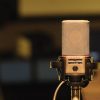
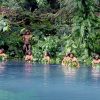



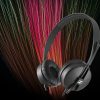
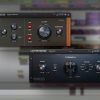

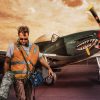
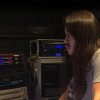

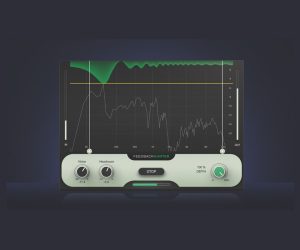
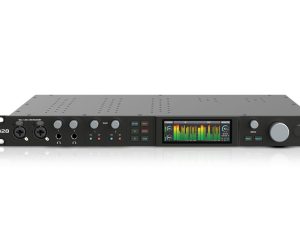


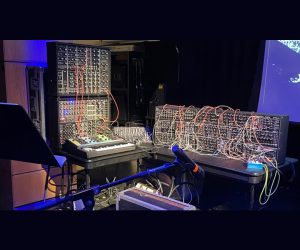

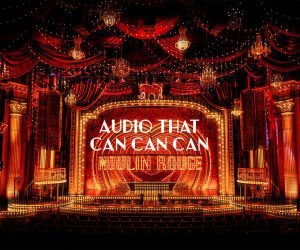

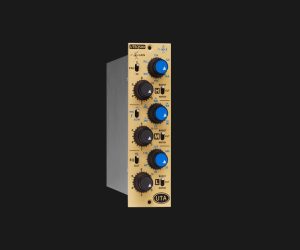

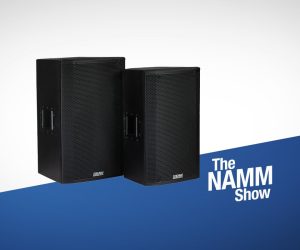


Incredible article!